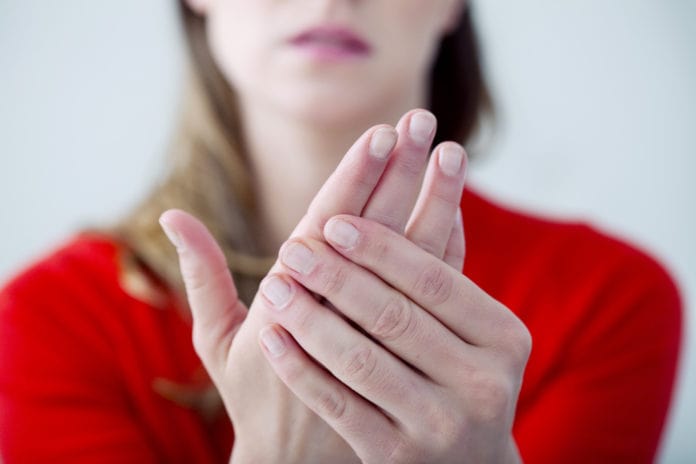Overview
Regulation of body temperature is a natural phenomenon. It is not uncommon to have cold hands, even when the outside temperature is not cold. When the outside temperature is extremely cold in winter, the human body tries to keep the body warm by keeping consistent blood flow to the vital organs. This fluctuation in blood flow may result in cold hands and feet. It is a perfectly normal condition and not a sign of any underlying health condition.
However, persistent cold hands may indicate some concern .
What are cold hands?
If you have consistent cold hands, you may notice a change in the color of your fingers. People exposed to cold weather such as mountain climbers, defense personnel, workers in cold storage may experience frostbite. However, unexplained and persistent cold hands may point towards an underlying health condition.
What are the symptoms of cold hands?
If you experience cold hands frequently, you may want to look for symptoms such as,
- Changes in skin color, especially blue.
- Formation of blisters.
- Feeling of numbness in your hands and fingers.
- Tingling
- Hardening of skin.
What causes cold hands?
Cold hands are primarily caused by exposure to cold temperatures. Certain illnesses may also cause you to develop cold hands.
- Anemia: Low production of red blood cells and impaired oxygen-carrying capacity can affect overall circulation.
- Changes in insulin levels (Type1 & 2 Diabetes): Being diabetic can increase the risk of developing cold hands.
- Hypothyroidism: Low levels of thyroid hormone can be an underlying cause of your persistent cold hands.
- Autoimmune diseases like lupus: Chronic inflammation in the body can trigger cold hands.
- Nerve damage: Nerve damage may cause numbness and tingling feeling on your fingertips.
- Peripheral Vascular Disease: This condition affects blood circulation through your arteries. If you have poor blood circulation, you are likely to have persistently cold hands.
- Raynaud’s disease: Nerve damage and sensitivity to cold temperatures are usual culprits that trigger the formation of pale blue and red spots on your hands.
When to see a doctor?
If you notice a sudden episode of cold hands without any cause that does not go away, you may want to consult with the doctor. Cold hands can indicate improper blood flow in your body or nerve damage. It is best to consult a doctor to understand and treat the underlying cause of this condition. How will a doctor diagnose what is causing cold hands condition?
Some of the tests involved include :
- Cold stimulation test: A tiny device is taped to your fingers to measure the responses to changes in temperature. Your hands are exposed to cold, frequently by immersing them in ice water. Then the device detects how long your fingers will take to return to their normal temperature.
- Nailfold capillaroscopy: This test involves placing a drop of oil on the base of fingernail before examining it under a microscope. If the arteries look abnormal, it may indicate a disease like scleroderma.
- Blood testing: Blood tests can be done to look for other conditions and causes of secondary Raynaud’s or to rule out other conditions.
Call 1860-500-1066 to book an appointment
How to Prevent Cold Hands?
Cold hands can impair your daily functioning. You can prevent cold hands by taking certain preventive measures such as,
- Wear warm clothing or gloves to protect your hands from exposure to cold temperatures.
- A dose of exercise including warm-up, cardio, yoga can help to improve blood circulation in your body.
- Use heating pads to maintain enough warmth when exposed to extremely cold temperatures.
- Gently massage your hands to increase blood circulation.
- Do not expose your hands to cold when outdoors.
- Avoid direct handling of frozen foods.
- Use hand warmers for quick relief.
- Manage your stress.
- Maintain hygiene
- Quit smoking
What is the Treatment for Cold Hands?
Medications
Some drugs can be helpful in increasing the flow of blood to your hands and fingers. These drugs include some medicines used to treat hypertension like:
- Calcium channel blockers
- Alpha blockers
- Angiotensin converting enzyme (ACE) inhibitors
Surgery
If other treatments are not effective, surgery may become necessary to block the nerves in your hands. Injections to block your nerves can be an alternative to surgery.
If there is tissue damage, the diseased tissue has to be removed surgically. In many serious cases, gangrene (death of the body tissue) may develop. This may need amputation (surgical removal) of part of the hand.
Conclusion
Cold hands are not a life-threatening condition. With proper diagnosis and treatment, the symptoms of cold hands can be easily managed.
Frequently Asked Questions (FAQS):
Can anxiety be a possible trigger of cold hands?
Yes. Psychological factors like anxiety and stress may aggravate your symptoms of cold hands.
Which vitamin deficiency can cause cold hands?
In many cases, a lack of vitamin B12 may lead to anemia. Anemia could be a possible cause of developing cold hands.
Why can smoking tobacco cause cold hands?
Nicotine in tobacco is a known substance that contracts your blood vessels, which results in poor blood circulation. It is recommended to stop smoking to keep symptoms of cold hands in control.


















